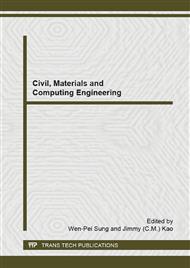p.515
p.522
p.528
p.535
p.539
p.543
p.547
p.553
p.558
The Prediction for Sewage Emissions in Xi'an Based on the Theory of Grey System
Abstract:
The water pollution and water scarcity have restricted the development of economy seriously in Xi'an. And the wastewater quantity is an important basic data in solving this problem. This paper build GM(1,1) model based on grey system theory to predict the discharge volume of urban domestic sewage and industrial wastewater from 2013 to 2020. The predictions suggest that the discharge amount of industrial wastewater will reduce by 6.7005 million tons per year. While the amount of domestic sewage increases year by year at the speed of 11.0989 million tons. The percentage of domestic sewage in total sewage emissions will get bigger in Xi'an. Additionally, some suggestion about improving the efficiency using of water and reducing sewerage discharged are given.
Info:
Periodical:
Pages:
539-542
Citation:
Online since:
December 2014
Authors:
Keywords:
Price:
Сopyright:
© 2015 Trans Tech Publications Ltd. All Rights Reserved
Share:
Citation:


